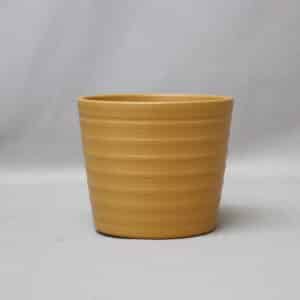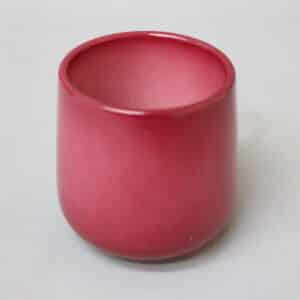Caring for pet rabbits – is it easy?
DIY and how-to

Caring for pet rabbits – is it easy?
“Stuffed bunny rabbits are so cute. So are real rabbits. How difficult could it be to take care of just one rabbit? All that is required is to give it something to eat, water to drink, and a big enough cage to live in. An occasional cleaning of the cage, and that’s it. This is all that there is to rabbit care.”
These are the thoughts that come to mind to almost everyone who wants to keep a rabbit as a pet. The thoughts of such people are both right and wrong. They’re right because maintaining a healthy pet rabbit is not at all difficult, but wrong because, unless you are aware of all the facts about rabbit food, healthcare and the things you should and should not do, things could really go wrong. With pet rabbits, it is the minor facts that matter: what you feed them, the amount of exercise they get, even how you carry and handle them.
Buying your pet rabbit
Do I already have a pet that could pose a threat to the rabbit? (dog, cat etc.)Once you have decided that you want a rabbit as a pet, there are a few questions that you should answer.
- What will it cost me to take care of the rabbit? (cage, food, the occasional veterinarian expense etc.)
- Are all the supplies that will be required available?
- Do I have the time to take proper care of the rabbit?
Once all these questions are answered in the positive, you should decide on what colour rabbit you want. Rabbits come in many colours – snow white, beige shades, light brown to dark brown shades, shades of gray, rabbits having a single color, rabbits with stripes, the combinations are endless. The best solution is to visit your local pet store and see what choices are available.
The rabbit decided, you must now decide on the cage. You should buy a cage that allows the rabbit to stand up fully stretched on its hind legs without any obstruction. The cage should be large enough to accommodate the rabbit when it is fully stretched. Make sure that there is extra space to accommodate a litter box, including space for the feed and water. The cage must be easy to clean and indestructible. A metal cage with a wire mesh floor is the most preferable choice. Not only will this cage be indestructible, but also easy to clean.
If you think that the major buying decisions (the rabbit and cage) are over, you are mistaken. The most important part is still left out – the food. Yes, this is of utmost importance. The entire health and well-being of the rabbit will depend on this. As you read the part on feeding your rabbit, you will realise the importance of choosing the proper food for your rabbit. Pet rabbits usually live 7 to 8 years, but keeping your pet on the proper feed should ensure it lives 10 to 12 years. Pet rabbits have been known to live up to 15 years given the proper care.
What are rabbits like?
Before buying a pet rabbit, many would have asked the question “What are rabbits like?” A pet rabbit is neither like a pet cat nor a pet dog. Pet cats and dogs will take an immediate liking to you and not be afraid of you. This will happen with a pet rabbit too, but it will take much longer. Your pet dog or cat can be fed on a variety of things. Not the case with pet rabbits. You try feeding them just about anything, and that will be the end of your pet rabbit. Rabbits have a very sensitive gastrointestinal tract.
Rabbits are very affectionate, but could get really aggressive and destructive at times. Even the slightest mishandling of your pet rabbit could prove fatal. Treating the rabbit gently is very important.
Making your new pet rabbit comfortable.
When you get your new pet rabbit home, you must decide as to where the cage will be placed. Make sure it is placed where it will not obstruct your movement. The place should be well ventilated with a free flow of fresh air. Place the cage as close to the ground as possible. Place bedding made of straw in the cage so that the rabbit feels comfortable. Remember that the cage is not a place to confine your rabbit. It is more of a place where the rabbit will retire for the night or whenever it is tired, or hungry. As far as possible, do not keep the door of the cage shut, always leave it open.
Problems that your pet could face if confined to the cage will include a poor muscle tone because of no exercise, inflammation of the feet due to sitting in one place constantly, lethargy, aggression at times, and obesity due to lack of any exercise. Rabbits love jumping and running around. This helps keep their bodies in shape, keep their minds active and alert, and will help in eliminating a lot of sickness that will be present if they are confined to the cage.
Proper diet for your pet rabbit
A little care taken by you in feeding your pet will go a long way. It can ensure that your rabbit remains disease-free, healthy, active, and enjoys a lifespan of between 10 to 15 years. Thanks to what we see on television, we presume that all rabbits enjoy are carrots. Not so. Rabbits are basically wild animals, so carrots are very much non-existent in their natural diet. Rabbits are herbivores and their primary diet consists of a variety of grass and leaves. Wild rabbits also enjoy seasonal flowers or fruit.
All rabbits will eat grass. Part of this goes into an intestinal tract known as the cecum, where it is converted into small pellets that are soft and filled with nutrients. These soft pellets are known as cecotropes and are absorbed by the rabbit as they are being excreted. They are easily digested and contain fatty acids, vitamins and amino acids, which are all very important for the well-being of the rabbit.
Your pet rabbit’s diet should consist primarily of hay. Always make sure that there is enough hay in the rabbits cage. There are two types of hay – grass and legume. Make sure that the hay you give your pet is the grass variety. Lucerne grass which is naturally sun-dried is the best. Find out where you can have easy access to such grass/hay. It will be required throughout the life of the rabbit. Always make sure that the hay that you feed your rabbit is dry and fresh. The hay should never be damp and dull. Do not worry about the rabbit spoiling its teeth with the constant chewing and munching of this hay. Rabbit teeth grow constantly, eliminating the possibility of teeth destruction.
Wild rabbits gorge on green grass and fresh leaves, so your pet should also get its fair share of greens. Along with hay, greens are a vital part of the rabbit’s diet because they will provide all the nutrients that hay provides, but in addition fresh greens will provide the rabbit with water. Yes, the rabbit will have permanent access to fresh drinking water, but you can’t force the rabbit to drink. When the rabbit consumes greens they are also getting a sure supply of water. Good options are broccoli, cabbage, celery, and most of the greens that are dark in color. Occasionally feed your rabbit fruits such as pineapple, pear, peach, papaya and any of the sweet berries. Special treats could include edible flowers such as roses and lilies.
As far as possible, stay away from commercially available rabbit food. These foods are usually packed with starch and fat. They are made to the rabbit’s taste, so that the rabbit enjoys eating it. What will result is a rabbit that grows plump very fast. Many would think that this is very good, but just the opposite. Unwanted fat is accumulating in your chubby looking rabbit. Many nutrients present in natural food may not be present in commercial food. No doubt, your rabbit will look cute and chubby for some time, but sooner or later it will begin to suffer. A plump fat rabbit is not a healthy rabbit. Healthy rabbits are those that have a strong muscular tone with minimal fat. The proper diet with enough exercise ensures this. The proper diet will not only ensure that your rabbit is in the peak of health, but also reduce your veterinary bills.
Lifting your pet rabbit
Your pet rabbit is not a cuddly stuffed toy rabbit. You can’t treat it the way you would your toy rabbit. Rabbits have very fragile backbones. Never pick up your rabbit so that its hind legs are left dangling. The rabbit might kick violently, possibly fracturing its backbone. Never lift the rabbit by its ears. It is very painful for the rabbit, just like it would pain you if someone tried to lift you by the ears.
The best way to lift your rabbit is to put one hand below its hind legs for support and the other below its chest and then lift it. The entire weight of the rabbit must be supported by your hands. As far as possible, prevent small children from picking up the rabbit. They tend to get a bit excited and might cause unintentional harm to the very rabbit they want to care for. If they insist on carrying the rabbit around, please get them well trained in the technique of lifting the rabbit.
When to visit the veterinarian
If you feed your rabbit with the correct diet and allow it to exercise enough, the veterinarian is someone you may never have to visit. Always watch out for abnormal behavior in your rabbit. If you notice something different, it may be time to take your pet to the veterinarian. This may include a sudden loss in appetite, a sudden weight loss, suddenly wanting to be confined to the cage, extremely aggressive behavior, and just about anything that may seem abnormal. If you notice that your rabbit has diarrhea (not very common in rabbits), do not wait. Your pet requires medical attention immediately.
In summary…
Buy your pet rabbit from a reputable pet shop like Stodels Fish and Pet Centres . Always keep the cage open and try to place it where there is a good flow of fresh air. Always keep the cage clean, with a sufficient stock of fresh food and water. Be very careful while lifting and handling your rabbit. Take your pet rabbit to the veterinarian as soon as you notice the slightest change in its behavior.
You might also like
Shop online
-
Wooden Trellis 600×1500
- R439.99
-
- Sale!
Dutch Iris Dark Blue Bulbs
- Original price was: R69.99.R39.99Current price is: R39.99.




